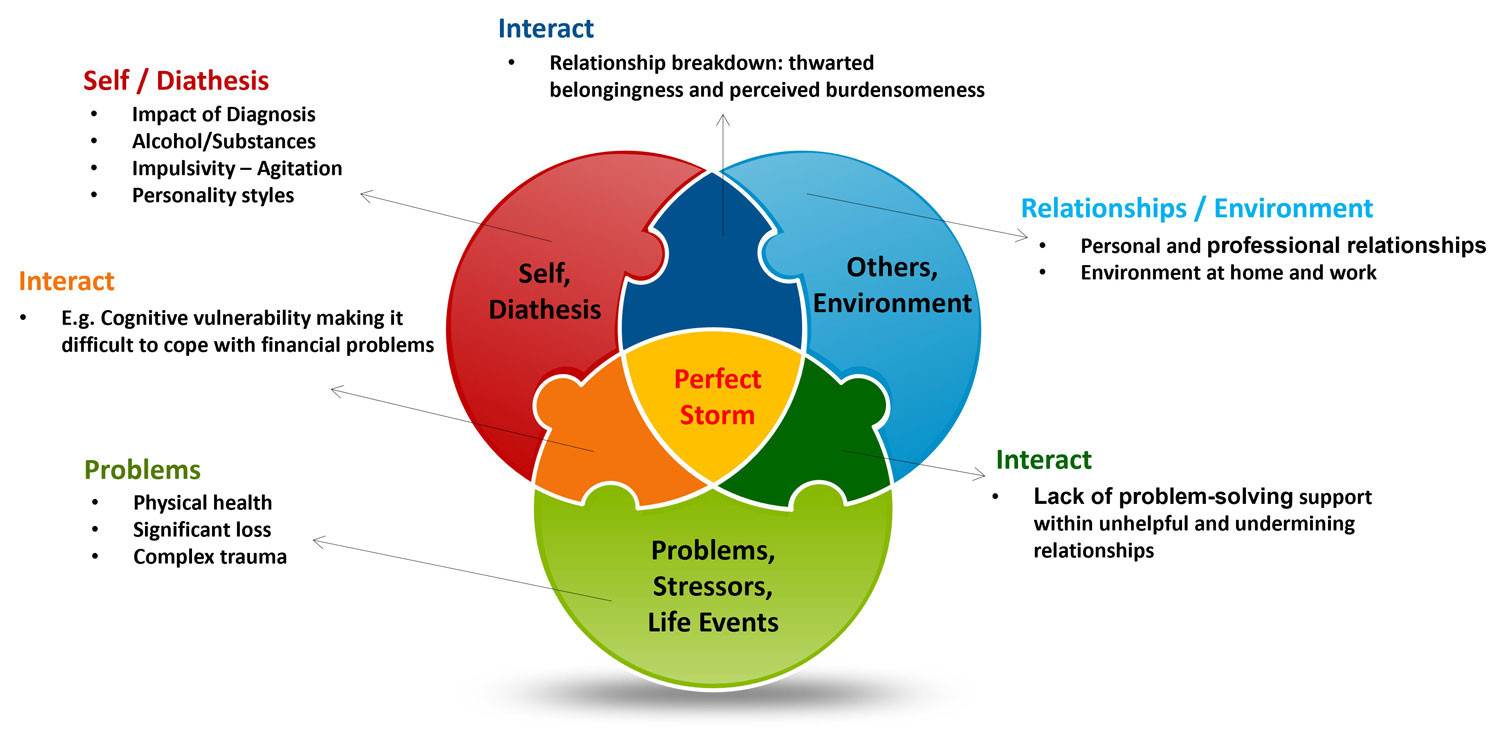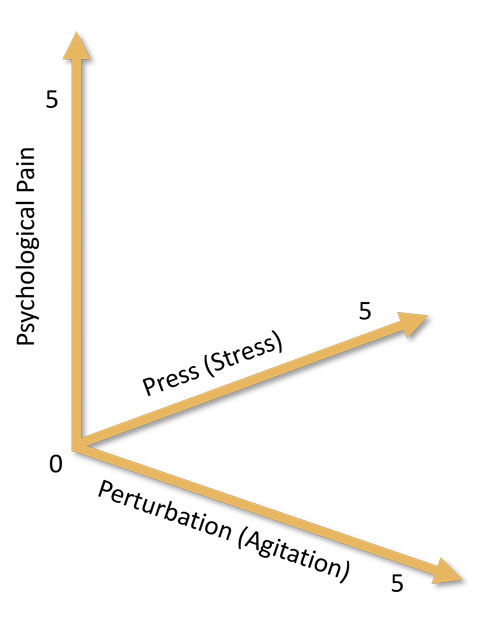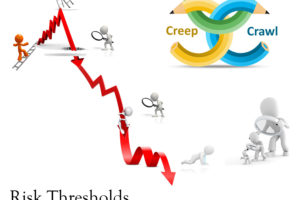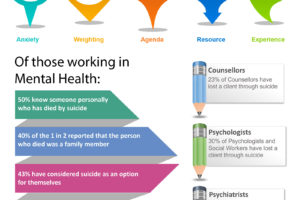
06 | Risk Rethink I – Warning Signs
- Posted by Manaan Kar Ray
- Categories Weekly PROTECT Podcast
- Date February 11, 2022
Host: Good day, I am Mahi, your host for episode 6, Risk Rethink. So far, we have covered two chapters from the CORE module. The first, Care Compass focused on the balancing act that professionals need to strike between risk and recovery. The second, Optimise Pain Relief provided strategies for creating a pain based narrative. The goal is to discover common ground between the person who is struggling with suicidal distress and the supporting professional. Both theoretical constructs help in creating relational safety by getting the person and their family and friends on board for the recovery journey. On the road ahead risk to self, fluctuates based on what is going on in the person’s life. The person, their loved ones and all professionals involved have a part to play in addressing and responding to the risk. For the professional it begins with a risk assessment, Manaan given in this episode we will be focusing on a novel approach to risk, will you begin by sharing with our listeners the purpose of a risk assessment?

Expert: Put simply, the purpose of a risk assessment is to alert the assessor to the presence of warning signs and guide the next steps in risk management.
Host: Are there specific issues that you see in current risk assessment practices?
Expert: Risk assessment training has been obsessed with empirically based risk factors and it is true that risk factors can alert the assessor to the potential for harm, but there are 100s of them, and in reality, they make little predictive contribution on their own.
Host: But surely detection of risk factors must be central to risk management?
Expert: Yes and no. Consider one of the strongest risk factors, the presence of a psychiatric diagnosis. Psychological autopsy studies have consistently shown that 90% of people who take their lives through suicide have a diagnosis of a mental illness (Jobes 2006). However, in secondary mental health care, every patient has a diagnosis. This makes the presence or absence of the same redundant as a predictive risk factor. The same can be said of most risk factors when considered independently, e.g. of the millions who are socially isolated, very few go on to suicide.
Host: So, a simple risk factor driven approach to risk assessment and prediction does not work
Expert: Yes, it will miss the individual context of the person and how a clinically diagnosed condition interacts with the person’s context like social isolation or their personality type, stressful work environment, broken relationship, bereavement, physical pain, disfigurement, legal issues, complex trauma from childhood sexual abuse, to name a few. It is not the risk factor on its own but the interaction between factors that often tips the balance into suicidal distress precipitating a perfect storm.
Host: Given the dynamic nature of risk and constant fluctuations due to the ebbs and flows of life, surely it is difficult, if not impossible, to predict when, where and how the perfect storm will be precipitated. What does a professional do in that case?
Expert: There is however, a final common pathway of warning signs which involves the emergence of hopelessness, suicidal thoughts, plans and or actions. These are a proxy measure of how significant the interaction of risk factors is at the moment. Warning signs indicate how close the perfect storm is.
Host: So your recommendation is..
Expert: Focus on warning signs rather than risk factors. All warning signs are risk factors but not vice versa, the key difference being time. Warning signs are dynamic, temporary and capture an acute escalation of risk rather than static suicide risk in the longer term.
Host: But warning signs can only predict clear and imminent risk, what about longer term risk
Expert: I would strongly recommend focusing on determining clear and imminent risk rather than providing a generic risk opinion about longer term risk. It is the next few minutes, hours and days that one can meaningfully intervene in, not years. There are too many variables that can change in a short period of time following a suicidal presentation. Any attempt to provide a risk opinion beyond a time frame that one can safely plan for is invalid and redundant.
Host: Are you saying that risk factors have no value at all?
Expert: No I am not saying that risk factors have not got any value. Successfully treating a person’s diagnosed mental illness and/or substance misuse would help them embrace new and alternative ways of coping with the challenges of life, thus effectively reducing the risk. If untreated, it compounds the hopelessness and entrapment one perceives.
Host: So the same can be said of other modifiable risk factors like reconnecting with family and friends to overcome social isolation.
Expert: Yes, although risk factors on their own add little over and above what warning signs can provide in terms of risk prediction, they do provide valuable opportunities for intervention and risk mitigation.
Host: In terms of rethinking risk, prioritising warning signs over risk factors is that the primary message of the third chapter in the CORE module.
Expert: Well it is a message, I will not say the message. The primary goal of this chapter is to steer professionals away from traditional categorical predictions of high, medium and low risk towards a continuum of risk. It is an incredibly static approach to something that is fundamentally dynamic.
Continuum vs Categorical
Shneidman’s Cubic Model
Host: Can you tell us more about the continuum of risk.
Expert: Let me introduce our listeners to Shneidman. In the previous episode I had mentioned his name as the person who coined the term psychache. He is often regarded as the father of modern suicidology and is renowned for proposing the cubic model of suicide. The elegant simplicity of this model designed to conceptualise and predict situational specificity of an upcoming suicidal act is difficult to beat. It gets us thinking of suicide risk assessment in three dimensions, psychache (psychological pain), press (overwhelming life stress) and perturbation (agitation). Imagine a cube, a cube has 3 axes and each of the dimensions are plotted on each axis. Each dimension is a five-point continuum. So at one end of the cube you have 0-0-0, so the lowest point on the risk continuum, and at the diametrically opposite end you have 5-5-5, the highest point and in between you have all the different permutations and combinations. The coming together of all three psychological forces, psychache, press, and perturbation in the 5-5-5 corner cubelet indicates a clear and imminent risk of a suicidal act.

Host: I would request our listeners to look at the images available at www.progress.guide/blog and navigate to episode 6. It is much easier to conceptualise if you are looking at the images while listening to the podcast Lets go through each of these psychological forces, what is psychache?
Psychache - Psychological Pain
Expert: This is a profound and seemingly unbearable emotional suffering that the suicidal mind is drowning in. The pain is unique to the individual, and so is the pain threshold at which the person will cave and engage in a suicidal act. Comprehending the height of the pain is central to any risk assessment process. As discussed in the previous chapter, optimising pain relief is key to risk management. Either the source of the pain has to be identified and chipped away at, or if the pain is inevitable, tolerance has to be raised through coping strategies.
Press - Overwhelming Life Stress
Host: It sounds like the second axis press from overwhelming life stress could be at the source of psychache.
Expert: That’s true, press relates to those largely external pressures that have the capacity to psychologically overwhelm an individual. Many might sight these as the root of the individual psychache. It may be a relationship break-up, loss of a professional or personal role in life, traumatic events. They all cause significant distress and disrupt something that is deeply meaningful to the person. Sometimes stresses can be internal, e.g. command hallucinations. Presses give rise to the perception that I’m trapped by life and am overpowered by its psychological demands.
Perturbation - Agitation
Host: And finally what is Perturbation?
Expert: The survival instinct is significantly stronger than the drive for pain relief through suicide. This life-preserving force often explains why there are many who continue to live on with significant psychache. Perturbation can be thought of as the psychological oomph that is needed to overcome this natural threshold to avoid death. It is a state of emotional upset when one feels compelled to do something to change or alter his or her current unbearable situation. Although not synonymous, the term agitation captures this psychological energy that ranges from inner disquiet to overt psychomotor agitation.

Host: So, these three axes are all plotted on a scale of 0 to 5 on the cubic model, tracking up with increasing severity of each of the psychological forces?
Expert: Yes, and Shneidman postulates that suicidal acts occur in the lethal 5, 5, 5 intersections when the interaction of the maximum levels of psychological pain, stress, and agitation compel an individual to attempt to break free from the entrapment of life. So the 555 corner cubelet can be taken as an operational definition of clear and imminent danger to self.
Host: I can see what you mean by a dimensional approach and how risk is a continuum spread across the 125 cubelets within the larger cube, I can also see how changes for better or for worse can move the risk from one cubelet to another. This continuum is in sharp contrast to the risk categories of high, medium and low. But how would you use it in every day clinical practice?
Expert: The model not only informs the assessment of suicide risk in terms of whether the risk is clear and/or imminent, but it can be used to formulate and target clinical interventions. Moving the person from the 5, 5, 5 corners on any of the three axes can meaningfully move a high-risk suicidal patient into a less dangerous psychological space.
Host: Can you share some examples
Expert: So lets say:
- Husband receiving news of a promising new research trial for his terminally ill wife, moving them from a 555 to 554 as it decreases his psychological pain
- Organising for a PhD student who is currently completely overwhelmed, a reprieve for 3 months to submit their thesis, they may have been at 555, but it moves them to a 455, decreasing the level of press
- Providing lorazepam to a person pacing all night with extremely high levels of psychomotor agitation, moving them from a 555 to 545, decreasing their perturbation and the compulsion to act
Host: Each of these seemingly minor actions can move a person just enough on the relevant axis that might allow for other interventions and treatments to take effect.
Expert: Yes, the cubic model provides a three-dimensional assessment window into the suicidal mind that eclipses any one dimensional linear way of thinking about suicide risk assessment in terms of risk factors (Jobes 2006). Furthermore, each continuum serves as a target for multimodal bio-psycho-social interventions. Compared to the categorical classification of high, medium and low, a continuum from a risk management perspective is significantly more empowering for professionals. Each small nudge contributes to safety in the moment.
Host: The key message today is focus on warning signs rather than risk factors and when thinking about risk, think of it as a continuum. In the next episode we will continue the discussion on risk and explore the futility of risk categorization in detail. We will provide an alternative way to describe risk that takes into account the spectrum of risk and daily dynamic fluctuations. We will also look at the three mindset shifts that are essential to this new approach to risk and safety. As usual please do follow the podcast, there will be weekly episodes every Friday and share it with your colleagues. Providing healthcare professionals contemporary knowledge about risk assessments is crucial in suicide prevention. You can be a vector for spreading this knowledge at your work. Thank you for joining us.
You may also like

19 | Creep Crash Crawl

18 | AWARE 5 – Experience

